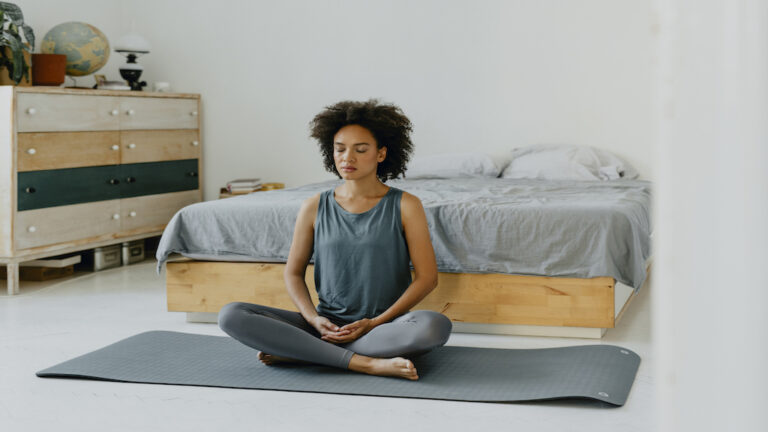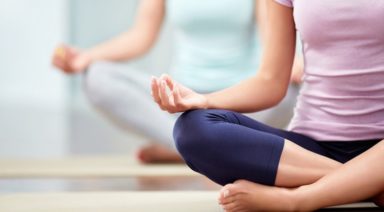The Mind, Body, Spirit Morning Ritual You Won’t Want to Skip

There is definite validity to the phrase “Waking up on the right foot.” What does your day look like when you have an invigorating start that leaves you vitalized and raring to go, versus a bummer morning that you need to overcome before tackling your challenges? Not only are you more productive and centered, but you also have a better mindset and outlook to do what you need to do.
Time recently published Inc.com’s 6 awesome tips that can be transformed into the ultimate morning routine. It takes into consideration your body, mind and even spirituality, if you’re so inclined. Check out the tips with a few extra added twists and takes:
1. Go at least 15 minutes sans screens
How much of our time goes into staring at screens all day ping back and forth on our smartphones, watching endless feeds. There is absolutely zero need to start your day off this way and begin a trend of being at your technology’s beck and call, instead of the other way around. You also be amazed at how much faster you move with your focus on your morning tasks. Plus, it keeps your work-home balance optimal, as you aren’t tempted to check your work emails before you get into the office.
2. Lemon water is your friend
I’ve covered this before, but warm lemon water with fresh organic lemon is an amazing thing, especially when you get to it as the first thing you do in the morning. Aside from nuking that morning breath, its benefits range from helping with digestion to boosting your metabolism. Check out this article on drinking lemon water and add a fresh twist to your morning for the full details.
3. There’s a right way to get out of bed
I was totally unaware of this, but there’s “one best way, if your body allows for it” to get out of bed. You need to roll over onto your right side, then push yourself up into a sitting position before standing with a straight back (no hunching). According to Inc.com, it’s the perfect combination of pressure-free and body-friendly. Instead of jarring your systems, it gently helps prepare your body for the day.
4. Set and affirm your goals for the day
Inc.com only covers setting “feasible goals for the day” (limited to three for achievability), but the power of the spoken word and setting your intention can make an incredible difference. Once you have it down, take a few moments to say it out loud every morning! Eventually, you won’t need the written version, and you can say it by memory. If you say it often enough, you’ll start believing it for yourself.
Affirmations are thought to work scientifically because humans have a thing called a Reticular Activating System (RAS) in their brains. This is like a filter that lets in information that we need and filters out information that we don’t. If we didn’t have this system, we would be bombarded with so much information that our senses would overload, and we would go into massive overwhelm. Instead, our brain registers what matters to us based on our goals, needs, interests, and desires.
When you say an affirmation over and over again, it affects your brain on a very specific level. One thing that happens is that it sends a very clear message to your RAS that this is important to you. When you do that, it gets busy noticing ways to help you achieve your goals. Prepare to be amazed at how many goals you accomplish!
5. Stretch it out
You don’t have to practice yoga if you don’t want to (though that’s definitely an amazing way to stretch your body!). You can, instead, do this from the comfort of your own bed. Inc.com suggests a simple stretched-out-legs-and-arms-overhead movement. If you feel like moving to a padded surface on the floor, you can try a supine twist or whatever feels right. Think about it…your body has been “offline” for many an hour, so warm it up properly.
6. Meditation persuasion
From Oprah to Giselle Bundchen, so many folks swear by meditation. And, as a good reminder from Inc.com, “meditation is only as strict, long, short, boring, or annoying as you make it.” A guided meditation can be an incredible way to start your day, but if you prefer not to travel the more metaphysical, spiritual route, all you really need to do is sit in a comfortable position and focus on clearing your mind. Even less than a minute can make a major difference.
7. Treat breakfast with respect
I’m adding my own here, but listen up. Breakfast is key. Don’t skip it. Don’t McDonald’s it. Quite thinking that if you eat junk, or just a cup of coffee, or nothing at all, that you will be a champion. Your body hasn’t had anything to eat for eight hours or so; it desperately needs quality refueling. Put some thought into what breakfast is best for you, even as far back as the night before, to make sure that you get the nutrition you deserve.
Is hitting the snooze button really worth it? Don’t be defeated by the day; instead, punch the day in the face right from the start!
The Magic of the Morning Ritual

For years, science has backed the idea of a morning ritual. Neural pathways are the most malleable in these early hours of the morning. Creating a routine to prepare your mindset and body to support your day provides a well of resilience for the twists and turns of life. The ritual can change over time, be it meditation, movement, or breathwork. It’s the time of day that stays the same. The practice is about showing up for yourself.
We also see evidence in current cultures across the world, of a morning practice being passed down from the ancients. The mystics of India called this time of day, just before dawn, the Brahama Muhurta. They say it’s the most sacred time to align the inner cosmos with the outer.
For example, Ayurveda’s recommendation for easing depression is to walk outside and get sun in your eyes first thing in the morning. Science has confirmed that this helps reset the circadian rhythm with the biological clock and supports the vitality of several health-related topics, including a good night’s sleep.
So, there are plenty of reasons why a morning ritual is a great way to start the day. Perhaps the bigger question is…how?
Neuroscience continues to provide valuable information on building new, healthy habits and dissolving the less desirable ones. For starters, we don’t need to rely on sheer willpower. Atomic Habits author James Clear quotes Greek poet Archilochus:
“You do not rise to the level of your goals. You fall to the level of your systems.”





































